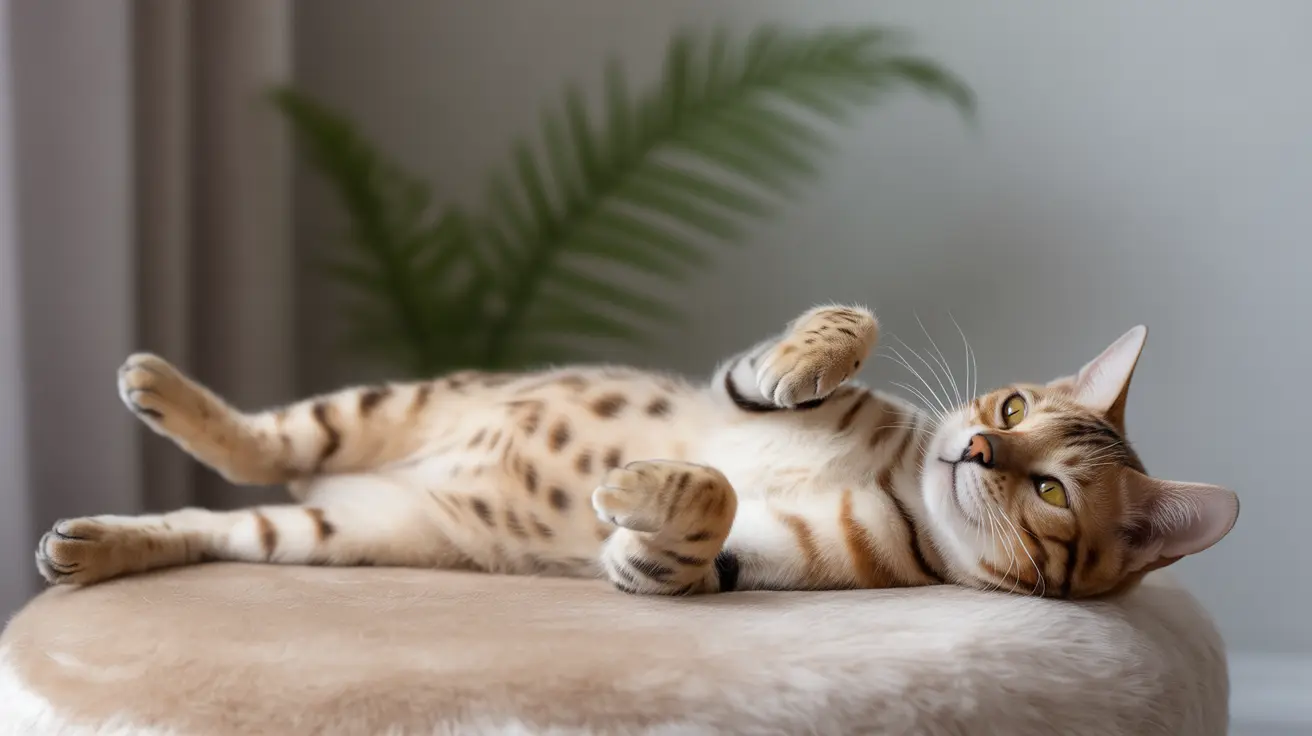Have you ever wondered about your cat's belly button? Like all mammals, cats do indeed have belly buttons, though they're quite different from the human variety. Let's explore everything you need to know about feline navels, from their formation to their care and potential health concerns.
This comprehensive guide will help you understand where to find your cat's belly button, what it looks like, and why it's important to monitor this area, especially in newborn kittens.
What Does a Cat's Belly Button Look Like?
Unlike human navels that often appear as distinct "innies" or "outies," a cat's belly button is remarkably subtle. It appears as a small, flat scar typically hidden beneath their fur. This tiny mark is located along the midline of their lower abdomen, just behind the rib cage.
The reason for its subtle appearance lies in how it forms. After birth, when the umbilical cord naturally detaches or is removed by the mother cat, it heals into a nearly invisible scar rather than creating the pronounced depression we see in human belly buttons.
The Formation and Purpose of Feline Belly Buttons
During pregnancy, the umbilical cord serves as a vital lifeline between mother cat and kitten. This essential connection delivers nutrients and oxygen while removing waste products. After birth, the mother cat typically chews through the cord, leaving behind a small stump that naturally dries and falls off within 3-5 days.
Once healed, the belly button serves no ongoing biological function. However, veterinarians often use it as an important anatomical landmark during examinations and surgical procedures.
Caring for Newborn Kitten Umbilical Cords
Proper care of a newborn kitten's umbilical area is crucial for preventing infections and ensuring proper healing. The area should be kept clean and dry, and owners should monitor for any signs of complications such as:
- Redness or swelling around the stump
- Discharge or unusual odor
- Delayed healing or cord detachment
- Signs of pain when the area is touched
Health Concerns and When to Seek Veterinary Care
While most cat belly buttons heal without issue, certain conditions may require veterinary attention. Umbilical hernias, though rare, can occur when the abdominal wall doesn't close properly around the umbilical cord site. This condition may require surgical correction if significant.
In newborn kittens, infection of the umbilical area (omphalitis) is a serious concern that requires immediate veterinary care. Early intervention is crucial for preventing potentially life-threatening complications.
Frequently Asked Questions
Where exactly is a cat's belly button located, and how can I find it on my cat?
A cat's belly button is located on the midline of their lower abdomen, just behind the rib cage. To find it, gently part your cat's fur in this area and look for a small, flat scar. It may be difficult to spot due to fur coverage.
How should I care for a newborn kitten's umbilical cord to prevent infection?
Keep the area clean and dry, avoid handling the stump unnecessarily, and monitor for signs of infection. The stump should naturally fall off within 3-5 days. If you notice any redness, swelling, or discharge, consult a veterinarian immediately.
Why does a cat's belly button look different from a human's, and does it serve any function after birth?
A cat's belly button appears as a flat scar rather than an indentation because of how their umbilical cord heals after birth. After healing, it serves no functional purpose but remains as an anatomical landmark.
What are the signs of umbilical cord infection or complications in kittens that I should watch for?
Watch for redness, swelling, discharge, foul odor, delayed healing, or signs of pain. Also monitor for any protrusion or bulging that might indicate an umbilical hernia.
Can a cat develop umbilical hernias, and when should I seek veterinary help for navel-related issues?
Yes, cats can develop umbilical hernias, which appear as a soft swelling or bulge near the navel. Seek veterinary care if you notice any protrusion, swelling, or if your kitten's umbilical area shows signs of infection or improper healing.






